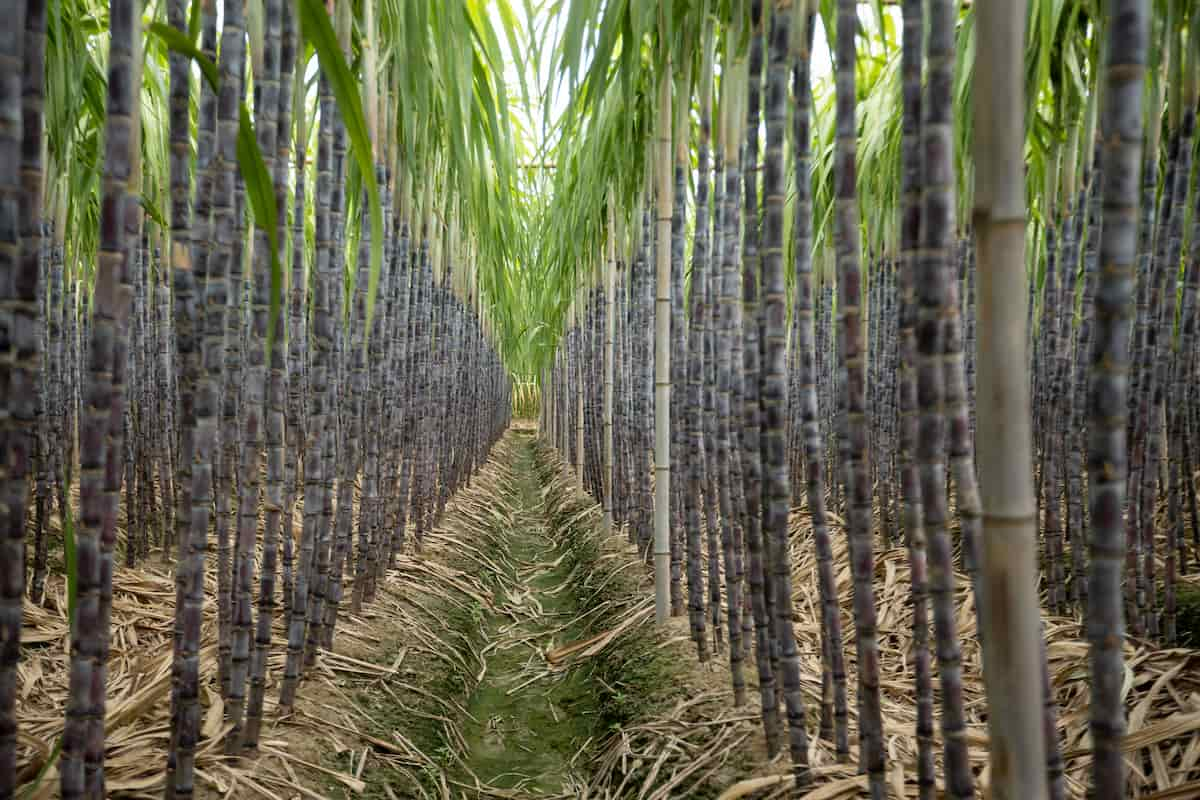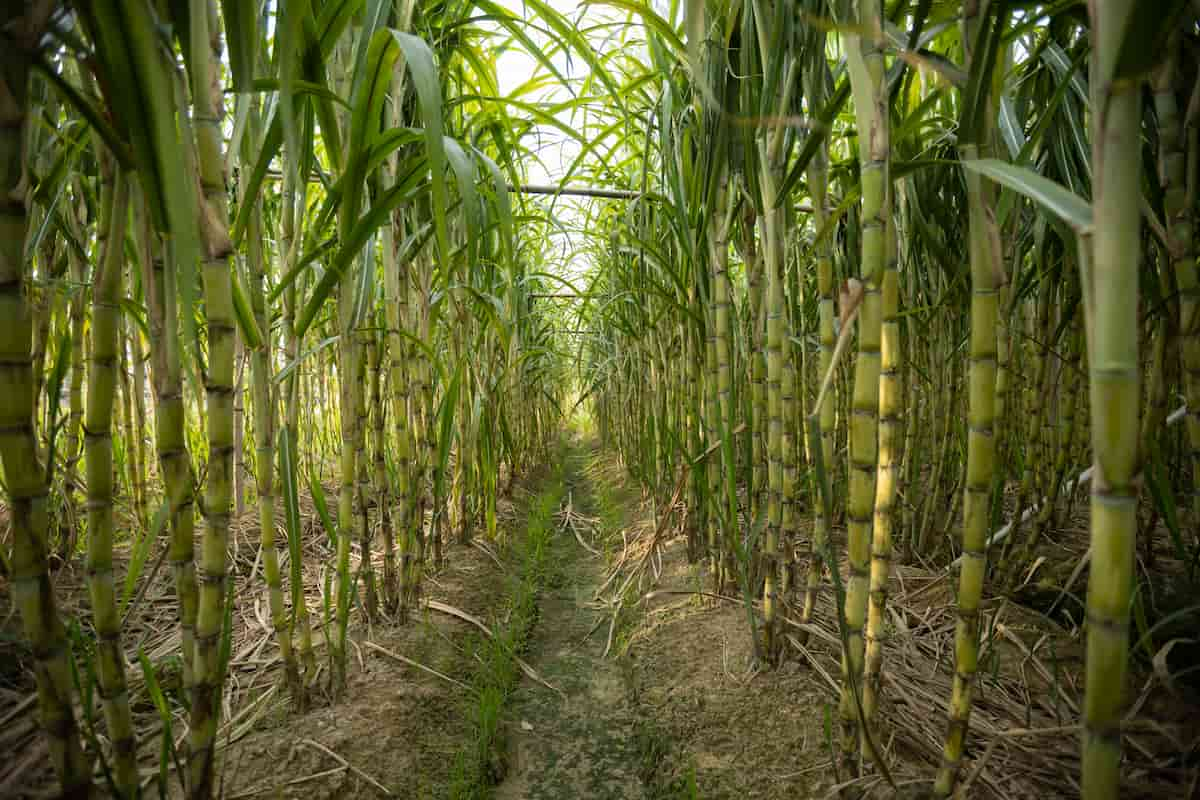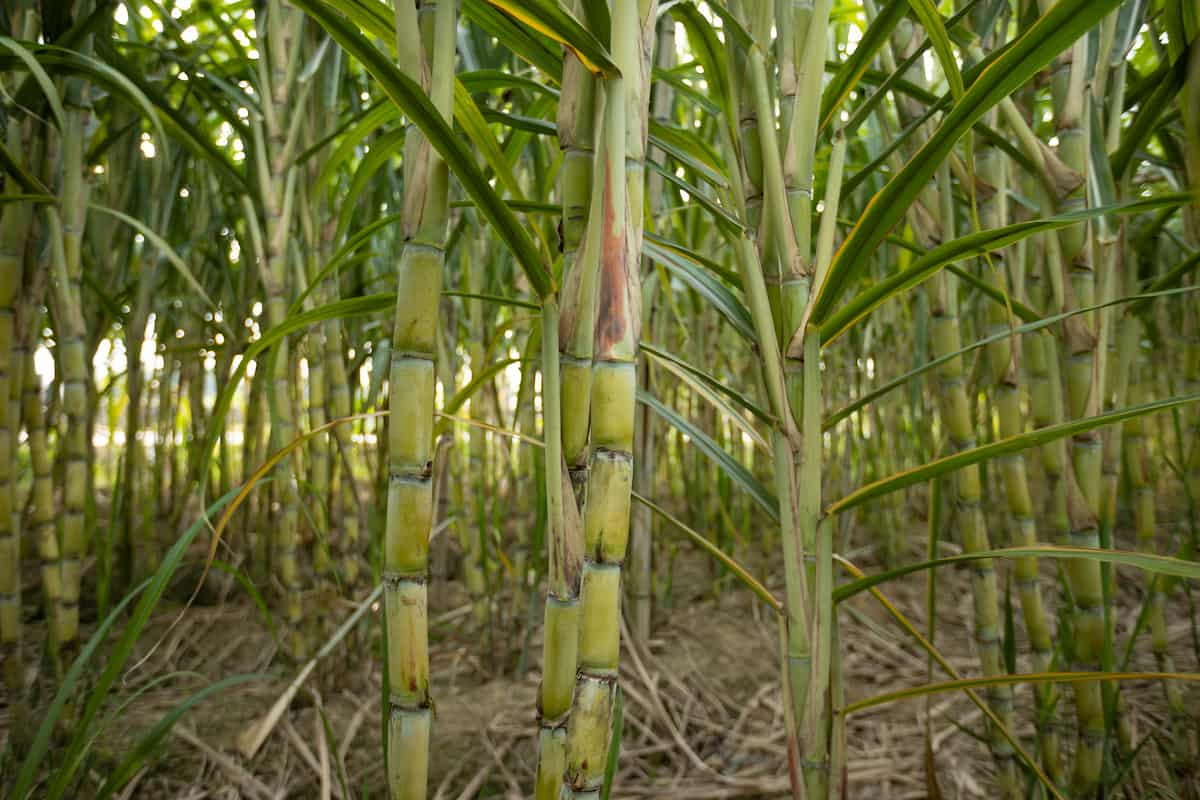With integrated nutrient management, intensive sugarcane agriculture can meet the increased nutrient demands and maintain higher productivity with improved resource base quality. Due to soil fertility improvements and sustainability, crop production systems can be adjusted to meet changing needs.

It is crucial to maintain a good soil physical and chemical environment and provide soil microbial biomass with an energy source by using organic, inorganic, and biofertilizers in balance. Sugar productivity can be sustained through the proper recycling of crop residues and factory wastes, and biofertilizers. Making recommendations based on the cropping system is important, as organic manures often leave profound residual effects.
Practices for Maximizing the Sugarcane Yield
Role of Major Nutrient Elements in Sugarcane Crop
Nitrogen
- Regarding sugarcane yield and quality, nitrogen is the most important nutrient. Plants require it to produce vegetative growth, such as tillering, foliage, stalks, stalk growth (internode formation, elongation, increase in stalk girth and weight), and roots.
- The foliage becomes pale, the leaves senesce sooner, the stalks become shorter, and the roots become longer, but the roots become thinner if there is a nitrogen deficiency.
- It is also harmful to consume too much nitrogen. As a result, it prolongs vegetative growth, delays maturity and ripening, reduces sugar content in juice, decreases juice purity, and increases soluble nitrogen in juice, which affects clarification.
- As a result of increased succulence, the crop becomes more susceptible to lodging and pest infestations.
Phosphorus
- Soil phosphates in soluble, plant-absorbable forms are essential for normal cane development. There is a relatively smaller requirement for phosphorus than for nitrogen and potassium.
- Phosphorus plays an important role in sugarcane production. Tillering is dependent on it for adequate growth of roots. By interacting with nitrogen, it influences ripening.
- When phosphorus is deficient, tillering is reduced, and canopy closure is delayed, resulting in weed infestations. Elongation of the stalk is also affected.
- It is essential that there is an adequate amount of phosphorus in cane juice during processing, about 300-400 ppm.
Potassium
- Crops generally require potassium in greater amounts than nitrogen or phosphorus. Potassium plays a crucial role in synthesizing sugar and transporting it to the storage tissues.
- A potassium-rich soil provides sugarcane with resistance to pests, diseases, and lodging. Its ability to maintain cell turgidity helps sugarcane under moisture stress.
- It balances nitrogen and phosphorus.
In case you missed it: Integrated Nutrient Management Practices for Maximising the Maize/Corn Yield

Following Integrated Nutrient Management Practices are Recommended in Sugarcane Crop
In recent years, several areas of the world where sugarcane is grown have experienced a decline in soil fertility due to intensive cropping and a lack of soil fertility management practices. Productivity can be restored through rationalized integrated nutrient management (INM) involving organic manures, fertilizers, and biofertilizers, and quality can be improved.
- It is necessary to incorporate bulky organic manures into the soil at a rate of six to ten tons per acre before planting. Examples include farmyard manure, compost, and press mud.
- It is possible to grow sunnhemp green manure as an intercrop and incorporate it into the soil after 30 to 45 DAP.
- It is recommended to use fertilizer schedules based on soil tests. A schedule of 275-65-115 kg of N, P, and K may be adopted if this is not possible.
- In 30 to 45 days after planting, phosphatic fertilizers, preferably super phosphates, can be applied basally or during first hoeing and weeding.
- A nitrogenous fertilizer and a potassic fertilizer should be applied four split times after planting, the first split 30 to 45 days after planting, the second split 60 to 75 days after planting, the third split 90 to 105 days after planting, and the fourth split 120 to 135 days after planting.
- Blending urea in a 4:1 ratio with neem cake powder a day before the application is recommended to increase its efficiency. The mixture of urea and potash fertilizer should be applied in holes of 10 cm depth and 15 cm spacing between rows of plants.
- Apply 20 kg of micronutrient mixture per acre consisting of 8 kg of ferrous sulfate, 4 kg of manganous sulfate, 4 kg of zinc sulfate, 2 kg of copper sulfate, and 2 kg of borax.
- Whenever chlorotic symptoms are observed on crop leaves due to iron or zinc deficiency, 5 kg of ferrous sulfate, 2.5 kg of zinc sulfate, and 5 kg of urea may be dissolved in 500 liters of water and sprayed over the leaves. Administering one or two more sprayings every 15 days may be necessary.
- In between 30 and 45 days after planting, mix 4 kg of Azospirillum and phosphobacteria biofertilizers with 10 kg of compost and apply it basally in the planting furrows or when first hoeing and weeding. Crops require soil pH levels between 6.5 and 7.5.
- At a 4-month stage of the crop, foliar application of Ethrel at 250-300 ppm (2.5 – 3.0 ml/10 liters water) controlled flowering in sugarcane and improved juice quality.
Fertigation in Sugarcane Crop
As groundwater is depleted and droughts become more frequent, sugarcane production needs a lot of water. Therefore, a micro-irrigation system will be needed to use irrigation water efficiently without affecting sugarcane production. Nitrogen was saved by 25% when drip irrigation was used instead of surface irrigation.
Sugarcane productivity can be further increased by applying 100% RDN in drip irrigation. Once installed, drip irrigation systems can be used effectively for five years (up to the fourth ratoon). There was a 40% reduction in water consumption and a 20% increase in crop productivity due to sugarcane’s surface and subsurface drip irrigation.
To Mitigate the Effect of Moisture Stress
- Additional K2O application at 150-180 DAP over and above soaking setts in saturated lime water of 24 kg/acre
- A foliar spray of urea and KCl at 2.5% was applied at 90, 105, & 120 days after planting.
- Mulching of trash after 60 days
- Cane yields have been improved by applying FYM at 4 tons/acre before planting.
- Sugarcane should be planted by pit method under drought conditions in light and medium-textured soils.
In case you missed it: Soil Management for Organic Farming

Conclusion
The sugarcane crop has a high nutrient and water requirement due to its long duration and high biomass production. For this reason, minimizing chemical fertilizers and improving soil health requires comprehensive approaches, including micro-irrigation techniques, biofertilizers, and residue recycling.
- Feed Your Flock for Less: Top 10 Tips to Save on Chicken Feed
- Ultimate Guide to Ossabaw Island Hog: Breeding, Raising, Diet, and Care
- Hatching Answers: The Top 10 Reasons Your Chickens Aren’t Laying Eggs
- Eggs and Economics: Breaking Down the Cost of Raising Backyard Chickens
- Defend Your Greens: Proven Methods to Keep Iguanas Out of Your Garden
- Ultimate Guide to Cinnamon Queen Chicken: A Comprehensive Guide for Beginners
- Ultimate Guide to California Tan Chicken: Breeding, Raising, Diet, Egg-Production and Care
- Ultimate Guide to Marsh Daisy Chicken: Breeding, Raising, Diet, and Care
- 10 Types of Chicken Farming Businesses You Can Start for Profits